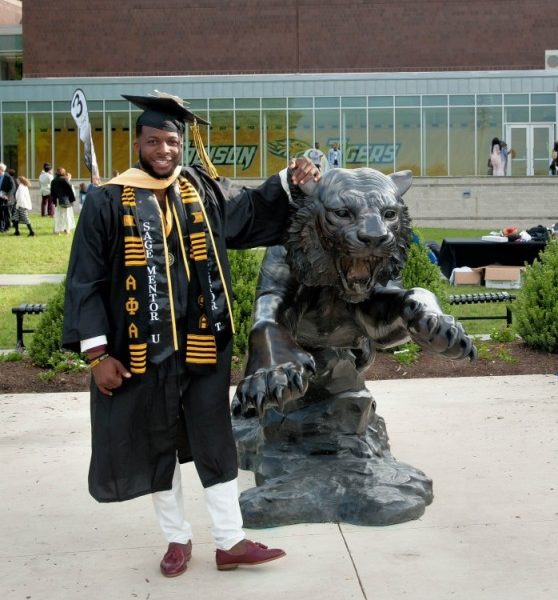Charter School Program Steps In to Fill Gaps in College Aid
ByAshley A. Smith
Read the full article at https://www.insidehighered.com >
Knowledge Is Power Program charter schools have built a national reputation for sending disadvantaged students to college, but that success didn’t always translate into students actually graduating from college.
Money shortages and gaps in financial aid, even relatively small ones, often got in the way and forced students to either temporarily take time off from college or to drop out entirely. As a result, only 44 percent of the 81 percent of KIPP alumni who enrolled in college after high school had graduated from a four-year institution as of 2016, according to a KIPP survey of alumni.
KIPP officials announced last month that they would expand a microgrant program started in Washington to help KIPP alumni break through the financial barriers that keep them from staying in college and graduating.
“This program really came out of our advisers having heartbreaking conversations with alumni,” said Meghan Behnke, deputy director of the KIPP Through College and Careers advising program. “Despite students working incredibly hard to get there and persist in programs, too many students are forced to leave school because they couldn’t pay a bill.”
KIPP, a national network of free, open-enrollment public charter schools, currently educates 96,000 students in prekindergarten through 12th grade and has more than 12,000 alumni. KIPP DC began offering the microgrants to its alumni in 2014 after receiving funding from the Carol and Eugene Ludwig Family Foundation. This year KIPP Bay Area Public Schools, KIPP Memphis Collegiate Schools, KIPP NYC Public Schools and KIPP Philadelphia Public Schools will each receive up to $40,000 a year from the Ludwig Foundation to offer the microgrant. The KIPP DC program receives $50,000 a year and provides financial support to 10 to 15 alumni annually.
Forty KIPP DC alumni have received the microgrant since the program began four years ago, and 95 percent of recipients have either graduated or are still in college, said Behnke.
The average one-time grant was $3,236, and it is available to eligible college sophomores, juniors and seniors.
“They have to be in acute financial need,” Behnke said. “We recognize college affordability is a major issue, but if a sophomore has a $10,000 gap for every year of college, that’s not something we can solve, because that’s a greater affordability issue.”
Behnke said the microgrants work well because KIPP provides college advisers for its alumni. These advisers build relationships with students KIPP assigns them and can respond quickly when financial emergencies arrive.
“We stay with our young people because we made a promise that we would help them graduate from college, and that degree is the strongest stepping-stone to economic sufficiency,” KIPP spokesman Steve Mancini said.
The alumni survey released in 2017 found that KIPP alumni struggled financially in college and that the majority still had not graduated from a four-year college 10 years after completing eighth grade.
The survey also found that about 60 percent of KIPP alumni did not have enough to eat on a consistent basis, and 40 percent said they missed meals so they could pay for textbooks, school fees and other expenses. Nearly 25 percent of alumni said they sent money home to support at least one family member.
Aaron Ford, a 2013 graduate from KIPP DC, credits the microgrant with helping him graduate from Towson University. Ford worked two jobs, at Six Flags America theme park and a Wilson’s Leather store, both located in Maryland. He applied for scholarships and grants to bridge the more than $10,000 gap between the financial aid he received and what he needed to cover his housing on the Maryland campus but didn’t get any.
“You start to doubt yourself and think you aren’t capable of attending,” Ford said. “I just didn’t have the financial resources, and that was frustrating for me.”
Ford told his KIPP adviser, with whom he remains in contact, about his financial struggles, and she helped him apply for the microgrant. Ford was awarded a total of $10,423 to cover his housing expenses for his junior and senior years. He graduated from Towson in 2017 and is now employed as a medical claims adjuster for an insurance company
“It was ultimately life-changing,” he said of the microgrant. “I come from a background of struggle, and it reassured me that I could pursue my dreams and make a better life for myself.”
It’s unusual for a PK-12 program to offer microgrants to college students, but the grants have become more common across higher education to help fill the small financial gaps students have as they work toward graduation.
“Microgrants don’t solve everything,” said Shari Garmise, vice president of the Office of Urban Initiatives at the Association of Public and Land-grant Universities, but institutions and organizations that are using them strategically are seeing the students that receive them graduate.
“The grants either prevent stops out or accelerate graduation,” she said.
